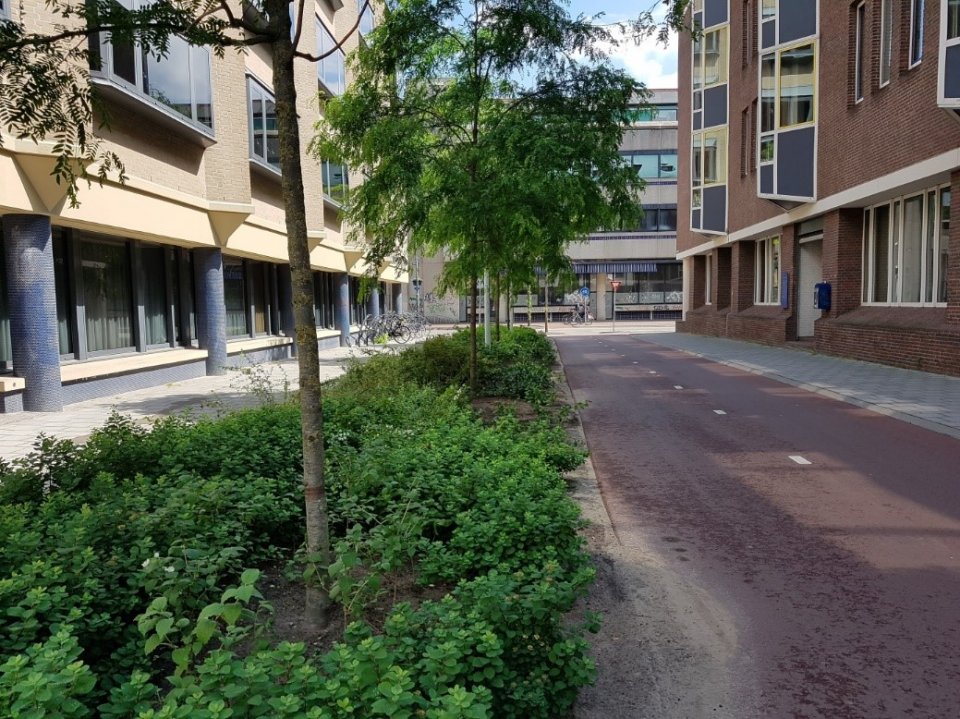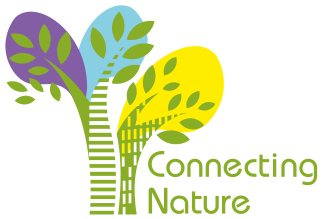
Waagstraat
Waagstraat is a small street for pedestrians and cyclists which previously only included a few small trees. Parts of the pavement were removed and a grassed swale, street trees and grasses were implemented on the street. The soil condition and infiltration capacity were also improved as part of the refurbishment.
Bilderdijklaan
Bilderdijklaan was transformed into a street for pedestrians and cyclists. Trees, bushes and shrubs were implemented on the street to address the problems with heat stress and flooding and to improve biodiversity.
Willemstraat
The city implemented trees and bushes on a paved bicycle parking located on Willemstraat to make it more attractive and to enhance biodiversity.
H. Boexstraat & Dommelstraat
Street trees that grew in limited spaces were given more space to grow and were enhanced with densified soil. Infiltration planters were installed to improve water retention and infiltration.
Several streets around the Eindhoven city centre (Waagstraat, Bilderdijklaan, Willemstraat, H. Boexstraat and Dommelstraat) have been rehabilitated and nature-based solutions such as bioswales and street trees have been introduced to address existing problems with heat stress and flooding, and to enhance biodiversity and attractiveness for pedestrians and cyclists.
The bioswale in Waagstraat decreased the physiological equivalent temperature (PET) at maximum by 18% relative to the reference measurements as well as decreased the temperature of the surrounding environment and buildings which was evaluated with thermal cameras outputs. Both H. Boexstraat and Waagstraat contributed to the increased infiltration capacity, although variation in infiltration was high. Contribution to the diversity of species in all five streets was lower than at two control sites.
- Flood peak reduction
- Increasing infiltration
- Reduce flood risk
- Reduce load to sewer system
- Reduce run-off
- Reducing temperature at meso or micro scale
- Carbon sequestration and storage
- Increase Biodiversity
- Increase quality and quantity of green and blue infrastructures
- Changing image of the urban environment
- Increase awareness of NBS solution & their effectiveness and co benefits
- Provision of health benefits
Monitoring provides information for the future planning and NbS value facilitating replication and upscaling but nterpreting monitoring data and outcomes may be challenging, so appropriate baseline data, evaluation techniques and expertise are required. Establishing joint initiatives (e.g., Communities of Practice or through other collaborative NbS effort) aid in overcoming reluctance to accepting NbS and establishing cohesion.
- Bioswale
- Street trees
- Infiltration planters
